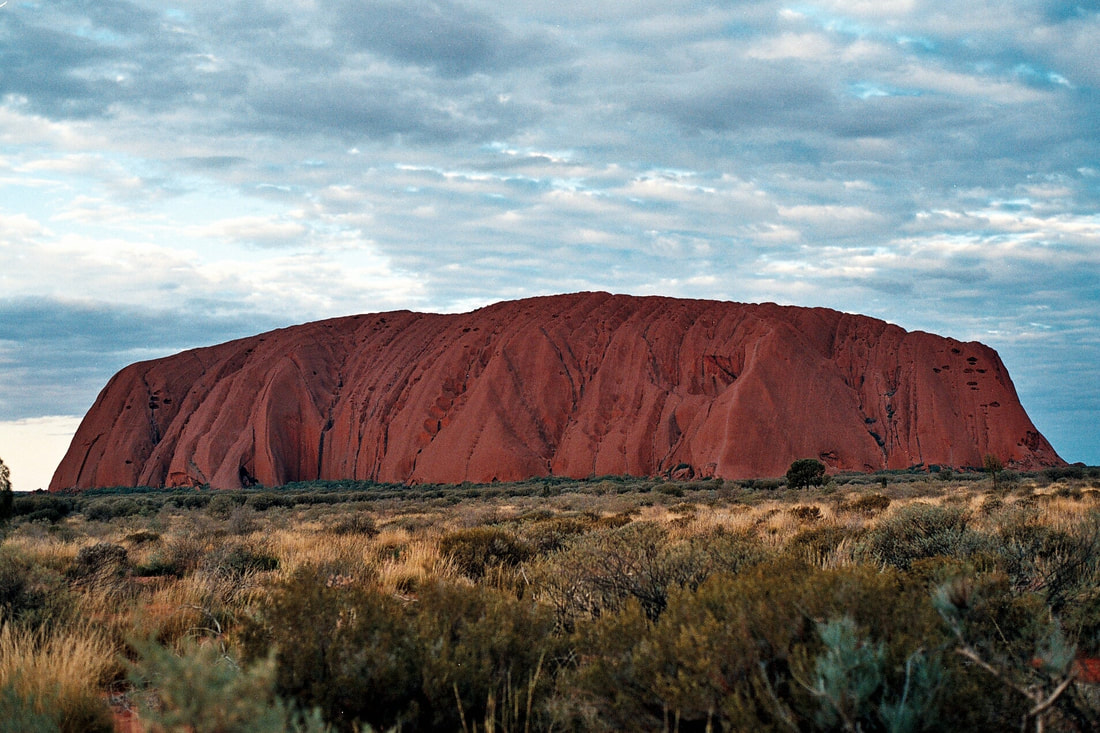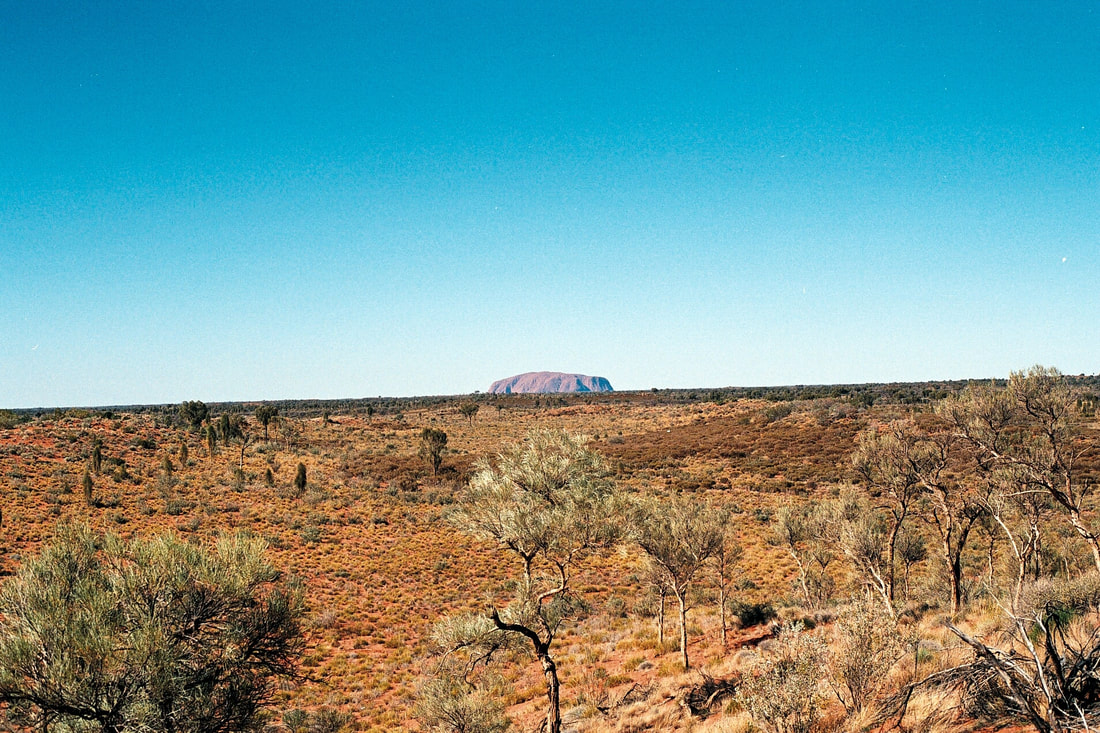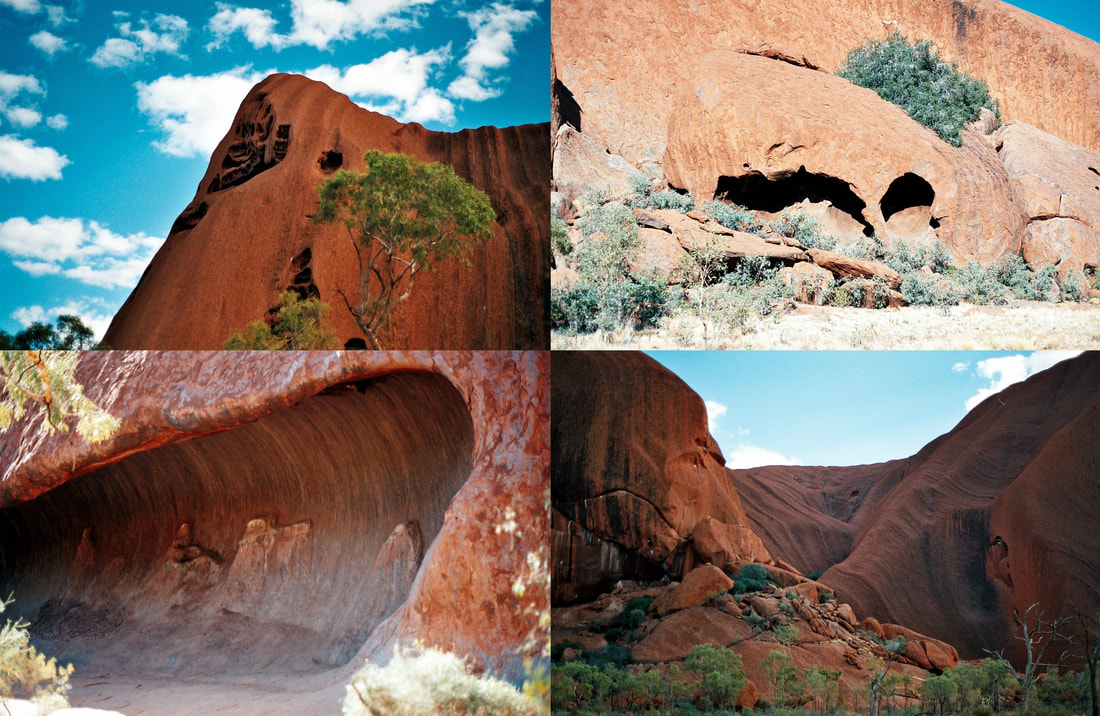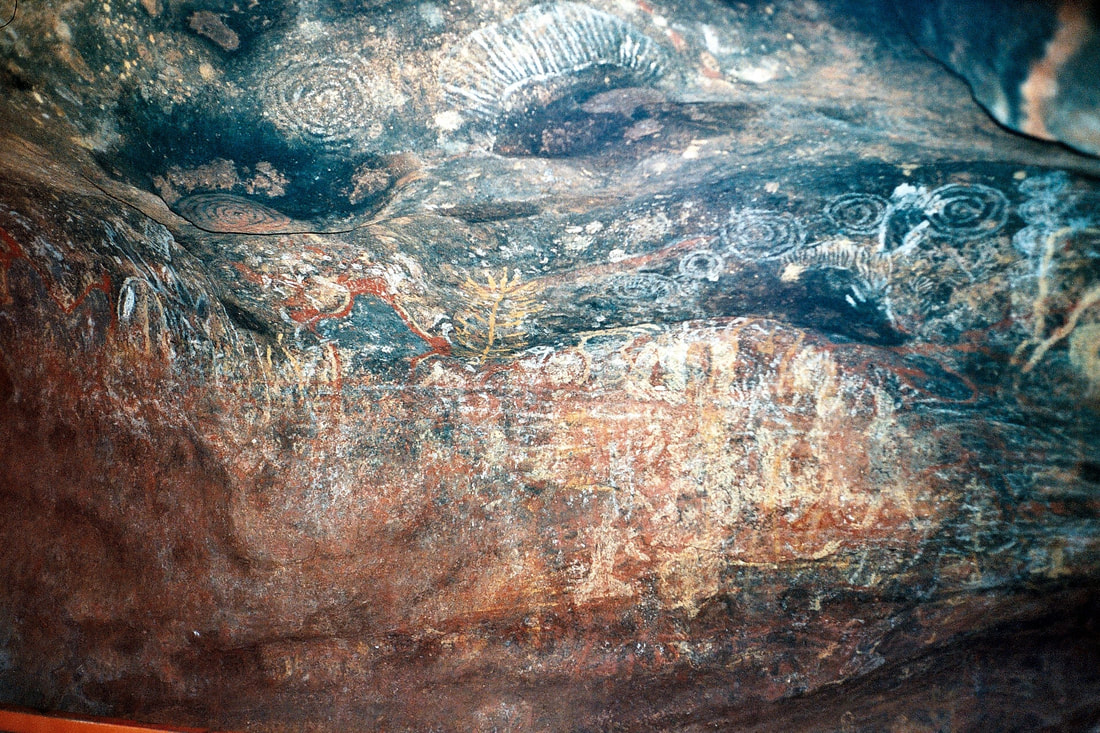|
One of the most recognizable and iconic landmarks in the world is Uluru, a sandstone rock formation that rises to a height of more than 1,000 feet above the surrounding desert landscape in the central part of Australia. The geological history of the monolith started hundreds of millions of years ago when sand eroded from nearby mountain ranges and was deposited as an alluvial fan in adjacent plains. The plains were then covered by a sea. The water and the deposition of additional sediments created pressures that turned the sand of the alluvial fan into rock. When the sea disappeared and the landscape was uplifted, folded and eroded, the sandstone rock proved more resistant to erosion than the surrounding sediments creating the rock formation we see today. The many bands in the formation attest to its sedimentary past. The monolith is an awe inspiring site because it protrudes sharply out of the land, and is one of the few landmarks visible for miles and miles of flat dessert. But it’s not only its presence, but also its shape and color that are remarkable. The curved steep slopes of the monolith contain many potholes, cracks, caves, and other formations sculpted by wind and water. The Uluru sandstone also has minerals that contain iron oxides which reflect sunlight in startling shades of yellow, orange, and red at dawn or dusk. Evidence of the presence of humans in the area goes back 30,000 years. Uluru is a sacred place to the local aboriginal people, and in several areas around the rock there are petroglyphs that bear witness to its historic, cultural, and religious importance. Uluru and other such sites in the Australian outback are a central part of The Dreaming, which is a set of aboriginal stories that encompass creation, philosophy, morality, and law.
The photographs are property of the author and can only be used with permission.
2 Comments
Here is another video by, Kevin, TheBackyardScientist. Kevin observes that dolphins as well as several YouTube personalities have made vortex rings. So not to be outdone, he attempts to build a machine to produce his own in the form of bubble rings. But, of course, he adds TheBackyardscientist’s twist to his endeavor by using propane to create the bubble rings and then setting them on fire underwater with a 40,000 volt cattle prod. Enjoy! Some pitchers can pitch a baseball at speeds upwards of 100 miles per hour. The fastest pitch recorded in Major League Baseball in the 21th century was pitched by Aroldis Chapman while playing for the Cincinnati Reds. The pitch was clocked at 105.1 miles per hour. In the video below, Destin, from the YouTube channel SmarterEveryday builds a baseball cannon capable of shooting baseballs at supersonic speeds (above 700 miles per hour). Back in 2001, former Diamondbacks pitcher Randy Johnson throwing a baseball at nearly 100 miles per hour disintegrated a bird that flew into it in a puff of feathers. Destin shoots the baseball at two inch thick sheets of steel, but you can pretty much imagine from the results what such a pitch would do to a baseball bat or a catcher! In the video below, the folks from the YouTube channel, Wired, provide a presentation on indoor skydiving and one of the best athletes in this discipline, Sydney Kennett. The wind speeds in indoor skydiving can be as high as 185 miles per hour. Indoor skydivers learn to use the friction caused by the wind flowing around their bodies to perform amazing feats of gymnastics. |
Details
Categories
All
Archives
June 2024
|





 RSS Feed
RSS Feed